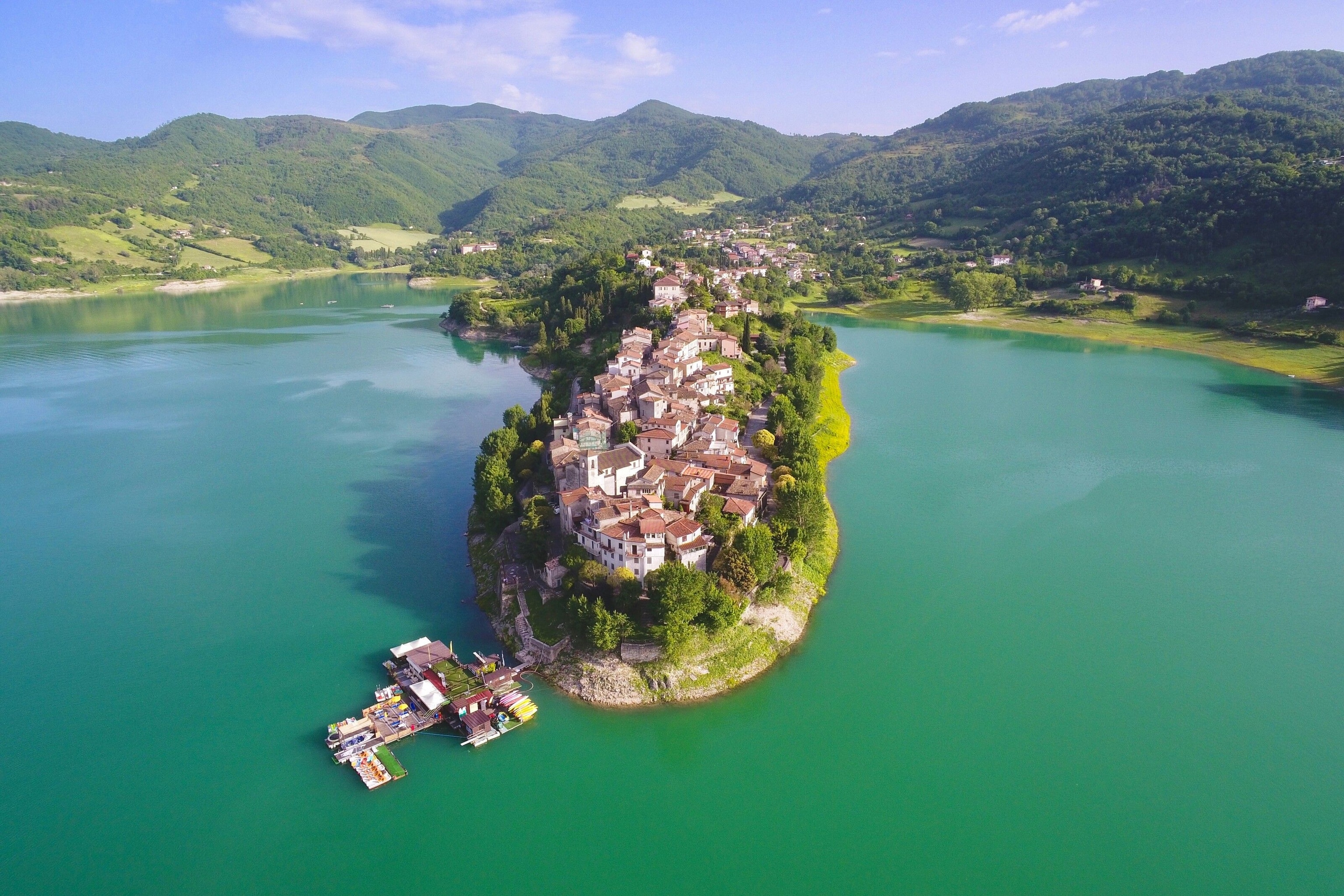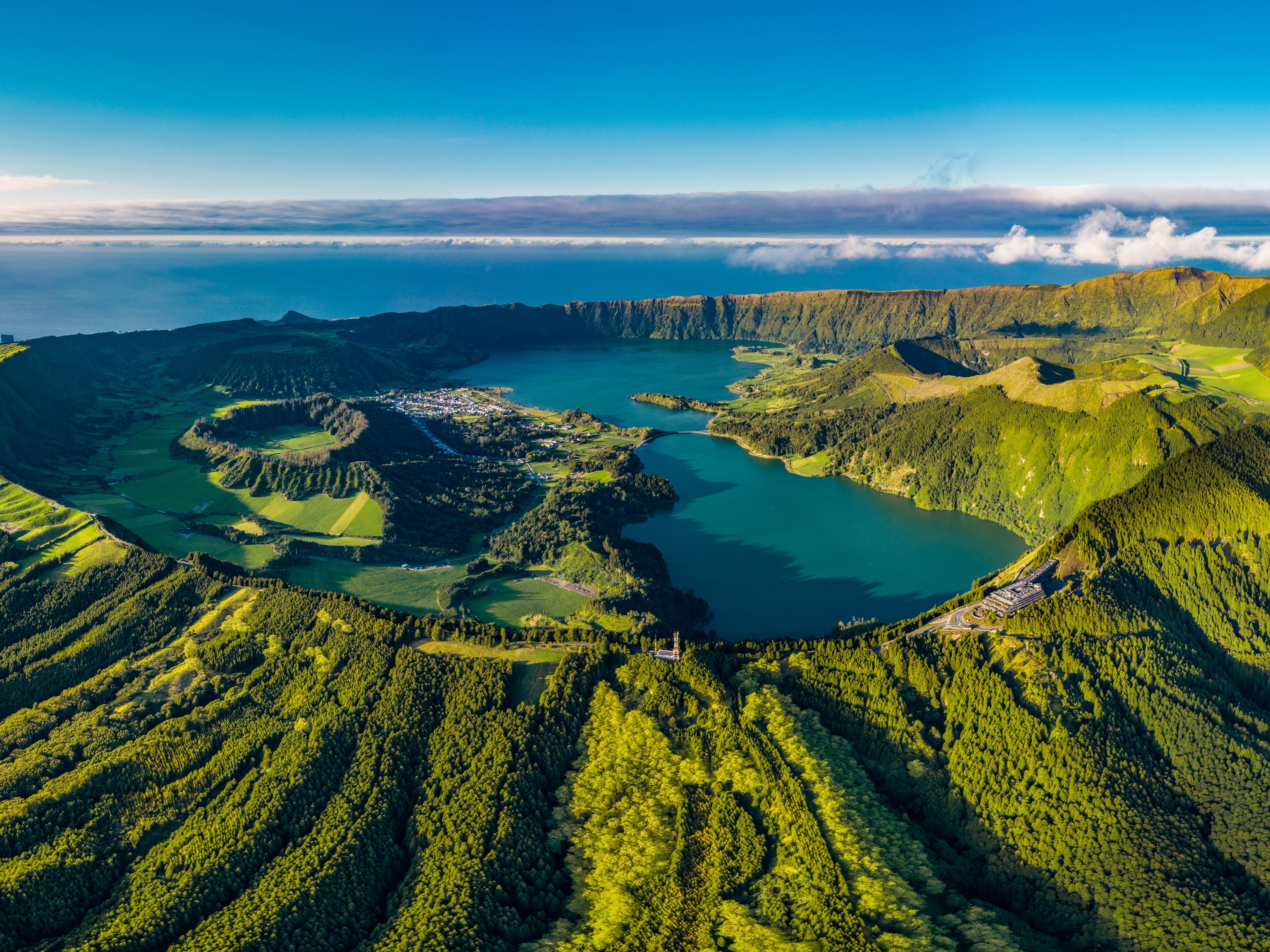
Where to hike in Italy: five stretches along the Grand Italian Trail
Hiking is experiencing a renaissance in Italy, and the little-known reaches of the Grand Italian Trail are its rediscovered masterpieces.
Weaving for around 4,000 miles throughout the entire length of the peninsula, the Grand Italian Trail connects the country’s 20 regions from Trieste in the northeast to Santa Teresa Gallura on the island of Sardinia. Conceptualised by a group of ambitious hikers in the 1980s, it was only opened in its entirety three years ago; today, it's Europe’s longest mountain trail, entailing 354 stages and runs through six UNESCO World Heritage Sites and 15 national parks. What’s more, it's set to be further expanded into the epic Path of Parks, which will link all of Italy’s 25 national parks by 2033. For the active visitors, Italy’s lesser-known corners and rural heartlands will soon be within walking distance.
1. The Italian classic
Best for: incredible views
The Campania region in southwestern Italy has long been a lure for visitors to the country, thanks, in part, to the beauty of the Amalfi Coast. Characterised by dramatic coastlines where steep cliffs stand guard over seaside towns, the rocky ridges that form the backbone of the peninsula provide exhilarating hiking and the chance to experience this Italian classic from a different perspective. The paths around the hilltop hamlet of Colli di Fontanelle offer panoramic views across the cliffside village of Positano and its bay all the way to the storied Li Galli archipelago, where the Sirens enchanted Odysseus. If a day of hiking has left you ravenous, try the Sorrento speciality of aubergine coated with sugar and chocolate.
2. The best-kept secret
Best for: off-the-beaten-path adventures
In recent years, the diminutive region of Molise in southern Italy has become best known, ironically, for its relative obscurity — it’s a destination so unexplored that even Italians joke it doesn’t exist. Although Molise may have flown under the radar of travellers and locals alike, it’s a hidden gem, with sandy beaches, mountainous landscapes and historic settlements displaying a slower, more traditional way of life. Seven stages of the Grand Italian Trail wind through the region’s small massifs, where remote villages are still connected by tratturi — ancient pastoral highways used by shepherds for the seasonal movement of animals. Highlights include the stretch from Bojano to San Marco for easy hiking, bucolic beauty and a visit to the archaeological remains of Roman settlement Altilia-Saepinum.

3. The high point
Best for: experienced hikers
For altitude away from the Alps, several stages of the Grand Italian Trail traverse the Apennine Mountains, Italy’s dramatic spine. The highest massif of the range, Gran Sasso is a definite highlight. Summertime meadows of wildflowers and grass pastures on the mid and lower slopes give way to towering vertical walls of limestone and dolomite, with the Corno Grande peak reaching its apex at a dizzying 9,555ft. The route from Pietracamela, in the Gran Sasso and Monti della Laga National Park, to mountain refuge Rifugio Duca degli Abruzzi summits the peak. Although it’s suitable for experienced hikers only, the challenge is worth the reward with magnificent mountain views in every direction.
4. The lakeside escape
Best for: a day trip
Few people are aware of the enchantment that the region of Lazio offers beyond age-old Rome, let alone that lakeside exploration is possible in Italy outside Lake Como and Lake Garda. Set in the verdant Turano Valley, at 1,760ft above sea level, Lago del Turano is a manmade lake located at the foot of Monte Navegna and Monte Cervia Nature Reserve. Much like the nearby Lago del Salto, clustered around its turquoise waters you’ll find numerous villages that offer a taste of rural living just an hour outside Rome. These include the historic Collalto Sabino with its imposing baronial castle, which is on one of the ascents to be found on this section of the Grand Italian Trail.
5. The all-in-one
Best for: ever-changing landscapes
Set between two seas, Puglia — the ‘heel’ of Italy — is a region rich in history, culture and natural splendour, making for over 400 miles of the Grand Italian Trail to explore in this region alone. The Alta Murgia National Park, in particular, offers a wealth of accessible hiking on well-maintained tracks. The thrills come not from the complexity of the walks, but the surprising landscapes that range from caves and canyons to fields and forests. Here, the gentle slope of a cliff may lead you to the UNESCO World Heritage Site of Castel del Monte, one of Italy’s most famous castles, or to the otherworldly rust-coloured bauxite quarries at Spinazzola.
For more information, visit italia.it
Follow National Geographic Traveller (UK) on social media




